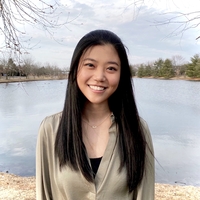The Oral Mucosa is Enriched with Inflammatory Fibroblasts in Diabetic Mice
Introduction:
The wound healing process is initiated when there is tissue damage. This dynamic process involves the activation of various stromal cells, such as fibroblasts, in the wound site. The primary function of fibroblasts is to produce extracellular matrix molecules like collagen and exert compression force for wound closure. Recently, studies have suggested that proinflammatory fibroblasts also play a critical role in releasing chemokines such as CXCL12 that recruit immune cells to injury sites. Systemic conditions like diabetes mellitus can impair the wound healing process. In this study, we aim to identify the inflammatory fibroblast phenotype in wounded oral mucosa of diabetic mice.
Materials and Methods:
Type I diabetes mellitus was induced in mice using streptozotocin (STZ). A 1 mm excisional punch biopsy wound was created in the palate of normoglycemic and diabetic mice. Oral mucosa samples of normoglycemic (3-6 months) and diabetic (6 months) mice were collected 7 days post-wounding. The samples were then stained with Masson’s Trichrome and analyzed for collagen deposition and granulation tissue formation. Bioinformatics analysis of single-cell RNA-sequencing data were employed to identify cellular phenotypic shifts in diabetic oral wound healing. To validate the transcriptomic-based experimental data, cells are spatially identified with RNA in-situ hybridization (RNAScope). RNAScope assay was performed using the CXCL12 and PDGF receptor alpha marker to spatially locate fibroblasts in wounded areas. Unpaired, two-tailed t-tests (p<0.05) were used to identify statistical significance.
Results:
There is impaired oral mucosal wound healing in diabetic mice in comparison to normoglycemic mice. Although there are no significant differences in the wound gaps, interestingly, there was a higher frequency of open wounds in diabetic mice. Granulation tissue formation show no significant differences between normoglycemic and diabetic mice. Collagen deposition was impaired in diabetic mice showing an 8% reduction compared to the normoglycemic counterpart (p<0.05). Additionally, scRNA-seq analysis revealed higher expression of CXCL12 in diabetic fibroblast. This finding was confirmed by RNAScope analysis using the CXCL12 and PDGF receptor alpha marker with fibroblast enrichment in total cells (p=0.0655).
Conclusions:
Our results display an enrichment of CXCL12+ fibroblasts and reduced collagen deposition in the connective tissue of diabetic compared to normoglycemic mice. Several chronic inflammatory diseases have reported an inflammatory fibroblast subtype in inflamed tissues.5,6 This population subtype is enriched in the CXCL-chemokine family namely CXCL1 and CXCL12.6 Functionally, inflammatory fibroblasts can recruit granulocytes.7 Our results are in line with proinflammatory fibroblast phenotype description as we found an increase in CXCL5, CXCL12 and CXCL1 in diabetic mice. Future research should address mechanisms dictating CXCL12+ fibroblast cell fate in diabetic conditions, its impact on other cell recruitment, and shed light on treatments to rescue the diminished collagen production.
References:
- Cialdai, Francesca, et al. “Role of fibroblasts in wound healing and tissue remodeling on Earth and in space.” Frontiers in Bioengineering and Biotechnology, vol. 10, 2022, https://doi.org/10.3389/fbioe.2022.958381.
- Ding, Jie, and Edward E Tredget. “The Role of Chemokines in Fibrotic Wound Healing.” Advances in Wound Care, U.S. National Library of Medicine, 1 Nov. 2015, www.ncbi.nlm.nih.gov/pmc/articles/PMC4620522/.
- Liu, Ye, et al. “Fibroblasts: Immunomodulatory factors in refractory diabetic wound healing.” Frontiers in Immunology, vol. 13, 2022, https://doi.org/10.3389/fimmu.2022.918223.
- P., Bainbridge. “Wound healing and the role of fibroblasts.” Journal of Wound Care, vol. 22, no. 8, 2013, pp. 407–412, https://doi.org/10.12968/jowc.2013.22.8.407.
- Korsunsky, Ilya, et al. “Cross-tissue, single-cell stromal atlas identifies shared pathological fibroblast phenotypes in four chronic inflammatory diseases.” Med, vol. 3, no. 7, 2022, https://doi.org/10.1016/j.medj.2022.05.002.
- De Klerck, Bert et al. “Pro-inflammatory properties of stromal cell-derived factor-1 (CXCL12) in collagen-induced arthritis.” Arthritis research & therapy vol. 7,6 (2005): R1208-20. doi:10.1186/ar1806
- Korsunsky, Ilya, et al. “Cross-tissue, single-cell stromal atlas identifies shared pathological fibroblast phenotypes in four chronic inflammatory diseases.” Med, vol. 3, no. 7, 2022, https://doi.org/10.1016/j.medj.2022.05.002.
- Ibid.

Comments